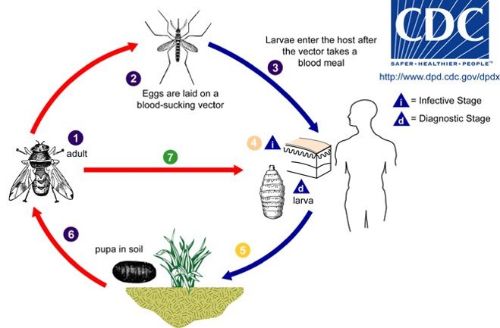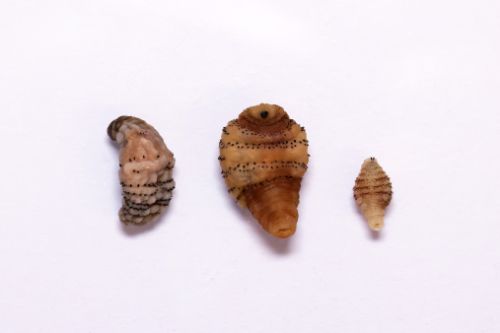Introduction to Diagnostic Medical Parasitology
Dermatobia spp.
Characteristics
- Insect: Three part body (head/thorax /abdomen) and 6 legs
- Dorso-ventrally flattened, size 6 mm
- Wings
- No specific host
- Complete metamorphosis (holometabole development)
- Larva (maggot) feed on rotten plant or animal
- Both sexes feed on blood
•Medical significance:
-
Myasis
Life cycle

-
Adult Dermatobia hominis flies are independent and not parasitic.
-
These flies capture blood-feeding arthropods, like mosquitoes, and attach their eggs to the arthropods' bodies using a sticky substance.
-
Bot fly larvae develop inside these eggs but stay on the arthropod vector until it feeds on a mammalian or avian host.
-
Once they emerge, the newly hatched bot fly larvae burrow into the host's tissue and create a subdermal cavity.
-
They remain in this cavity for 5-10 weeks, breathing through a small hole in the host's skin. When mature, they drop to the ground and pupate in the environment.
-
Typically, the larvae leave the host during the night and early morning, possibly to avoid drying out. After about a month, they mature into adults and begin the cycle anew.
-
Unlike Dermatobia hominis, other genera of myiasis-causing flies like Cochliomyia, Cuterebra, and Wohlfahrtia have a more direct life cycle. These adult flies lay their eggs either directly in or near wounds on the host. In the case of Cochliomyia and Wohlfahrtia, the larvae feed in the host for approximately a week and may migrate to other body tissues, often causing severe damage in the process.
Larvae
